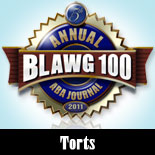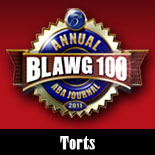Woman Sues McDonald’s, Ex-Husband for Turning Her Into a Prostitute
Once again, McDonald’s finds itself drug into the court system. But this time, the lawsuit has nothing to do with piping hot coffee. According to reports, Shelley Lynn has filed suit in a California federal court blaming the fast food chain and her ex-husband, Keith Handley, for turning her into a prostitute. This is not the type of success story McDonald’s typically promotes on its employment applications.
Before we jump to conclusions, there does not appear to be any evidence McDonald’s required the former store clerk to add new meaning to the term “Happy Meal.” Rather, Lynn claims McDonald’s negligently supervised and retained Handley, who owned a franchise 20 years ago. According to the complaint, Handley hired Lynn in 1982 as a counter person. The two started dating in 1985. Thereafter, Lynn revealed her dream of becoming a Vegas showgirl. To help her achieve that ambition, Handley reportedly bought Lynn a house in Vegas. Handley then allegedly pressured Lynn to find a job in a Vegas brothel to help pay for the home. Succumbing to pressure, Lynn claims she found a job in 1986 at the Chicken Ranch where she became a “top booker.” She married Handley in 1988, but the two later divorced. There are no indications from the reports as to how long Lynn claims she remained a prostitute.
We must question how McDonald’s became a player in this lawsuit. First, we are aware of no evidence at this time that McDonald’s knew or should have known that Handley was a potential sex trafficker. Lynn alleges in her complaint that McDonald’s did not have a proper procedure for reporting grievances. However, the only grievance she mentions is an incident where she was allegedly fired for insubordination. There were no indications that the insubordination arose out of her apparent hesitancy to become a prostitute. In fact, it appears, at least from the complaint, that Handley allegedly pressured her to enter the business only after she moved to Vegas – when she was no longer a McDonald’s employee.
Second, Lynn will have difficulty showing that it was reasonably foreseeable McKinney would hire an employee, start dating her, move her to Vegas, and force her to become a prostitute. There’s probably a law school examination question in these facts somewhere. Sure, McDonald’s probably doesn’t want to start a pattern of franchise owners engaging in intimate relationships with employees. But a relationship by itself is not a grounds for liability in this case. The issue is whether it was foreseeable McKinney would allegedly force Lynn into prostitution. There are no allegations of this conduct with any other employees. The conduct occurred after the period in which Lynn was employed by McDonald’s. The conduct did not take place on McDonald’s property. While we here at Abnormal Use are not judges, this doesn’t exactly sound like a case of negligent supervision/retention.




















